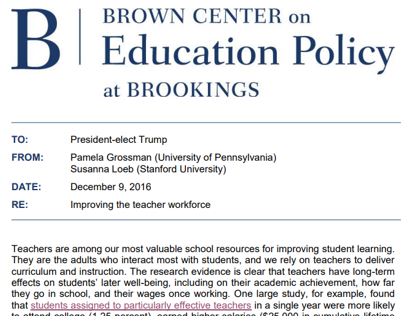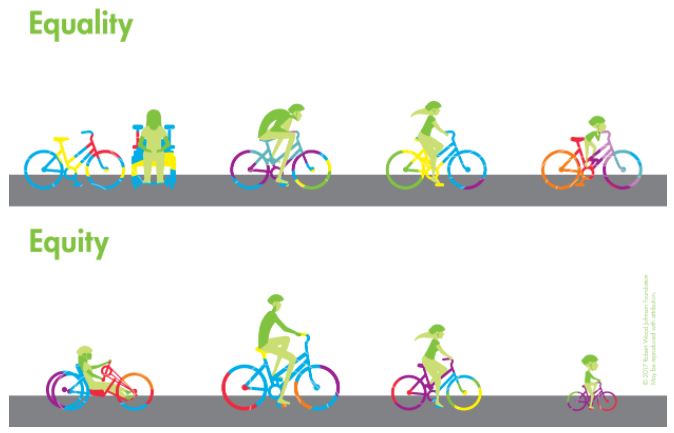
https://www.brookings.edu/wp-content/uploads/2016/12/browncenter_20161209_teachers_memo.pdf

The writing in this memo is conveying brief yet critical information quickly to multiple individuals at once. While it is not as formal as a business letter, it is professional since it includes action items for the intended recipient. This particular memo is divided into three general sections: The situation, Recommendations and Conclusion.
First the memo gives a quick introduction to the memo’s purpose. In my example it is talks about teachers being among our most valuable school resources for improving student learning.
My introduction would go something like this:
One in four individuals in the United States have a disability, which equates to 61 million people (CDC, 2021). For many of these individuals, disclosing an invisible disability in the work environment is an extremely complex dilemma. It can enable maintaining or obtaining employment, however disclosure can result in losing employment or to not being hired, due to of discrimination and stigma.
The next part of the memo is the situation. The situation gives an overview of the topic and provides the reader with a general outline about the overall purpose. The memo is clearly written by people in academic institutions with certain philosophies of education. The tone of the memo is polite and is written in a formal manner.
The memo says “In order for students to benefit from good teachers, school systems must recruit, prepare, improve, and retain excellent teachers and distribute these excellent teachers equitably across schools and communities. We currently face challenges across these areas.”
My situation might be:
The lack of disclosure by employees indicates they often feel the need to disguise their disability during the recruitment process as well as during the rest of their employment. Having a disability is different from the norm and thus obvious in a damaging way from others. With this potential stigma, individuals are afraid to disclose their disability, lest it adversely affect their employment relations and career prospects.
The next part is the recommendations. Recommendations are the point of the memo. Recommendations should be persuasive however all recommendations need support. As such the memo will encompass straightforward recommendations with support material immediately following or support for the recommendations, with data.
My recommendation might be:
The disclosure process is complicated, and the result is influenced by numerous factors.
For example, HR managers are an important stakeholder group who have mainly negative attitudes and behavior regarding disabilities. Since their job is to act on behalf of their organization, their attitudes and behavior may not change until organizations at the level of management change.
In the memo it starts out with “The federal government can increase the effectiveness of the teacher workforce through efforts to recruit, prepare, improve, retain, and more equally distribute excellent teachers. In keeping with the broader federal role in education, the federal role in teaching policy involves investments in capacity building and knowledge generation.” After that a series of recommendations are listed.
The final part is the conclusion. This sums up the point of the memo. It is clear cut and succinct.
“Teachers are the most important school resource for improving educational opportunities for students. We recommend six steps for the federal government to improve the teacher workforce, particularly in the most difficult-to-staff schools:”
My conclusion might sound something like this.
People with invisible disabilities are in a susceptible position as they choose whether or not to disclose their diagnoses. If recipients of these disclosures are supportive, this could create a more positive experience for the individuals disclosing.
However, it should be noted that multiple studies have shown that disclosure during the hiring period resulted in fewer invitations for job interviews (Hipes et al, 2016).
Positive outcomes of disclosure include:
– Improved relationships with colleagues and supervisors
– Authenticity
– Work environment support
– Friendly culture
Negative outcomes of disclosure include:
– Facing stigma
– Discrimination
Overall, as I evaluated this memo, I envision something shorter and more succinct. However I want to make sure I include research as it is to be directed to professionals in the field.
References:
Disability Impacts All of Us Infographic | CDC. Centers for Disease Control and Prevention. (2021). Retrieved 16 August 2021, from https://www.cdc.gov/ncbddd/disabilityandhealth/infographic-disability-impacts-all.html.
Hipes, C., Lucas, J., Phelan, J.C., White, R. (2016) The stigma of mental illness in the labor market, Social Science Research, Volume 56, 2016, Pages 16-25, ISSN 0049-089X, https://doi.org/10.1016/j.ssresearch.2015.12.001.

